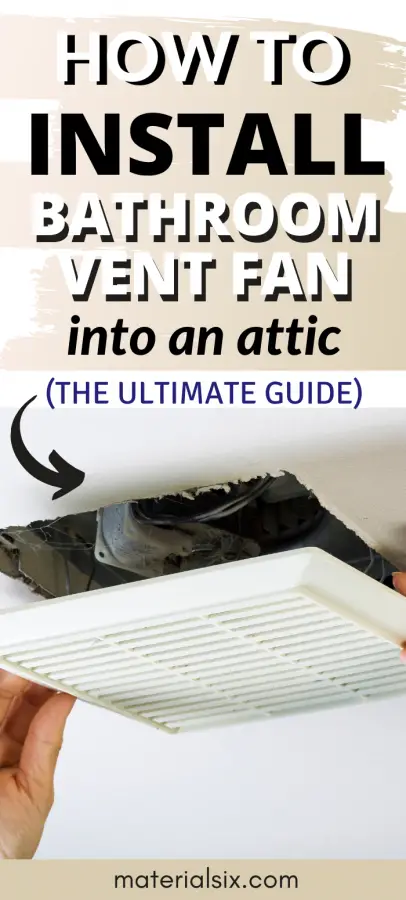Can a bathroom fan hose get vented into a house’s attic? If the answer is yes, then how is it done? A lot of homes have bathroom vents that have been wrongly installed into attics.
When it comes to bathroom fans that have been poorly vented, this can result in mold, moisture damage, and numerous other issues. However, by following a couple of important steps, it can be done the right way.
Within this helpful article, you are going to learn:
why it’s important to never terminate a bathroom vent within an attic,
- how you can correctly vent a bathroom fan duct onto the outside through your attic;
- why you need to insulate your bathroom vent pipe that’s contained in the attic;
- how mold is the real issue when it comes to bathroom attic venting; and
- how more moisture within your attic might result in poor air quality.
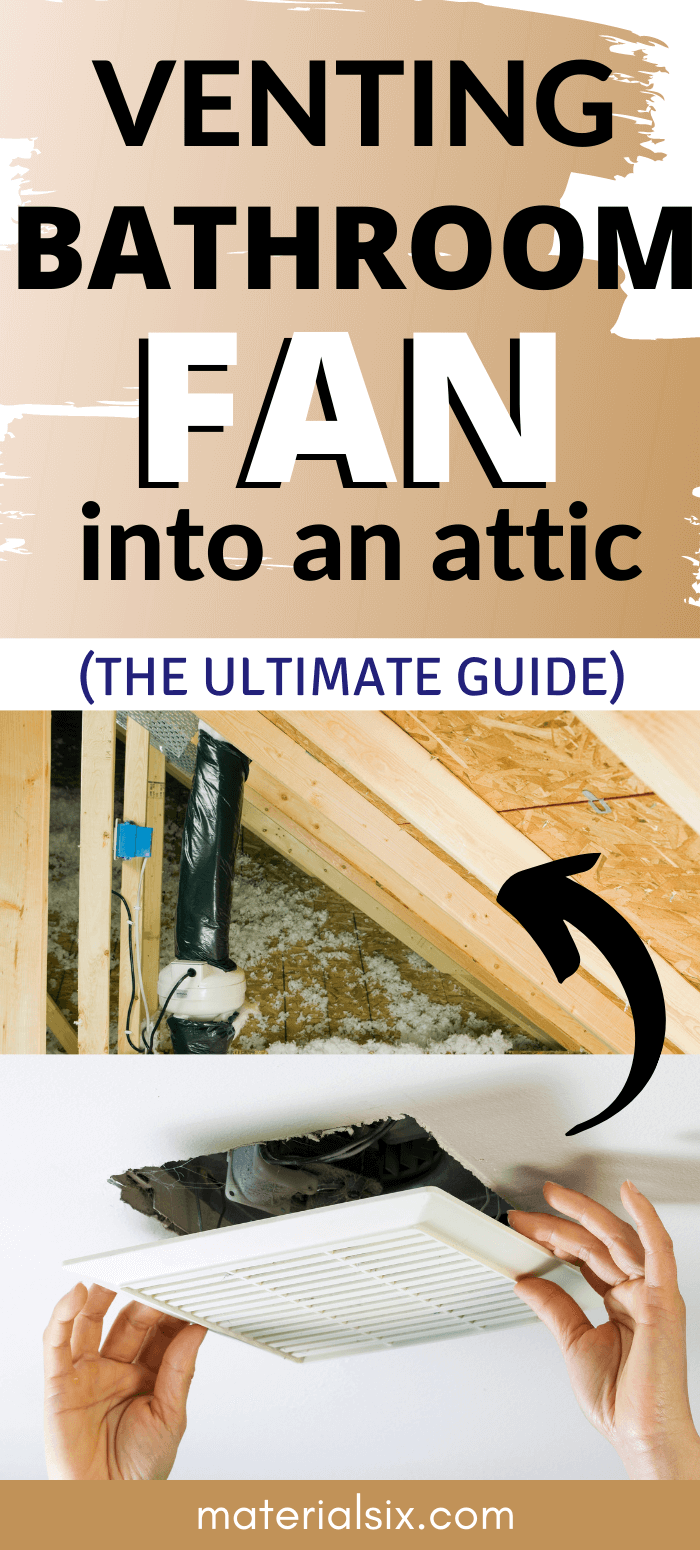
Can A Bathroom Fan Be Vented Within An Attic?
The answer to that question would be a ‘no.’ a bathroom fan should never be vented into an attic directly. On the other hand, it is possible to vent a bathroom fan through the attic, as it terminates on the gable end or the roof.
Even though it might seem like a simple solution, just leave the bathroom vent hose in the attic, since it is all outdoor air anyways.

However, that is not the case. When you do not properly end a bathroom vent within an attic, this has quite a bit of consequence. That is why builders have gotten rid of this practice several years ago. Before the ’90s, it was very common for builders to vent bathrooms into the attics.
Many of the houses, even now, have bathroom vents that go directly into the attic; hence, spewing moisture everywhere. The issue with this approach is that the complete moisture within the air will go onto the wood sheathing, wood ceiling joists, and wood rafters; this could result in the growth of mold and rot.
Particularly during the winter months, the extra moisture from the bathroom vent will build up frost onto the bottom of the roof sheathing; hence, this ice will eventually melt and start leaking onto the insulation plus the drywall ceiling.
The Correct Way to Vent a Bathroom Fan into Your Attic
The proper way through which you can vent a bathroom fan through your attic is by terminating the vent either to the gable wall or to the roof.
No matter what you pick, the vent will directly go to the outside and should be installed using a vent hood cover. Generally, the vent hood tends to have a small flap, which opens up when air gets blown through the vent.
During other times, it stays closed. This flap prevents the outdoor air from entering the home whenever the bathroom vent isn’t on. Plus, the flap also prevents any birds from building a nest within the bathroom vent, as they commonly do.
The nest of a bird within a bathroom vent will lower or get rid of the effectiveness of your bathroom exhaust fan. Moreover, it is also important to know that if you are installing a roof vent cover for the purpose of a clothes dryer, you would have to remove the metal screen, since it can catch lint and could potentially turn into a fire hazard.
Furthermore, when you install a bathroom vent through the attic, could be a bit of a complicated process. Plus, this is not a DIY job. Hence, you can find reliable online contractor search tools that can help you in finding trusted contractors for this job.
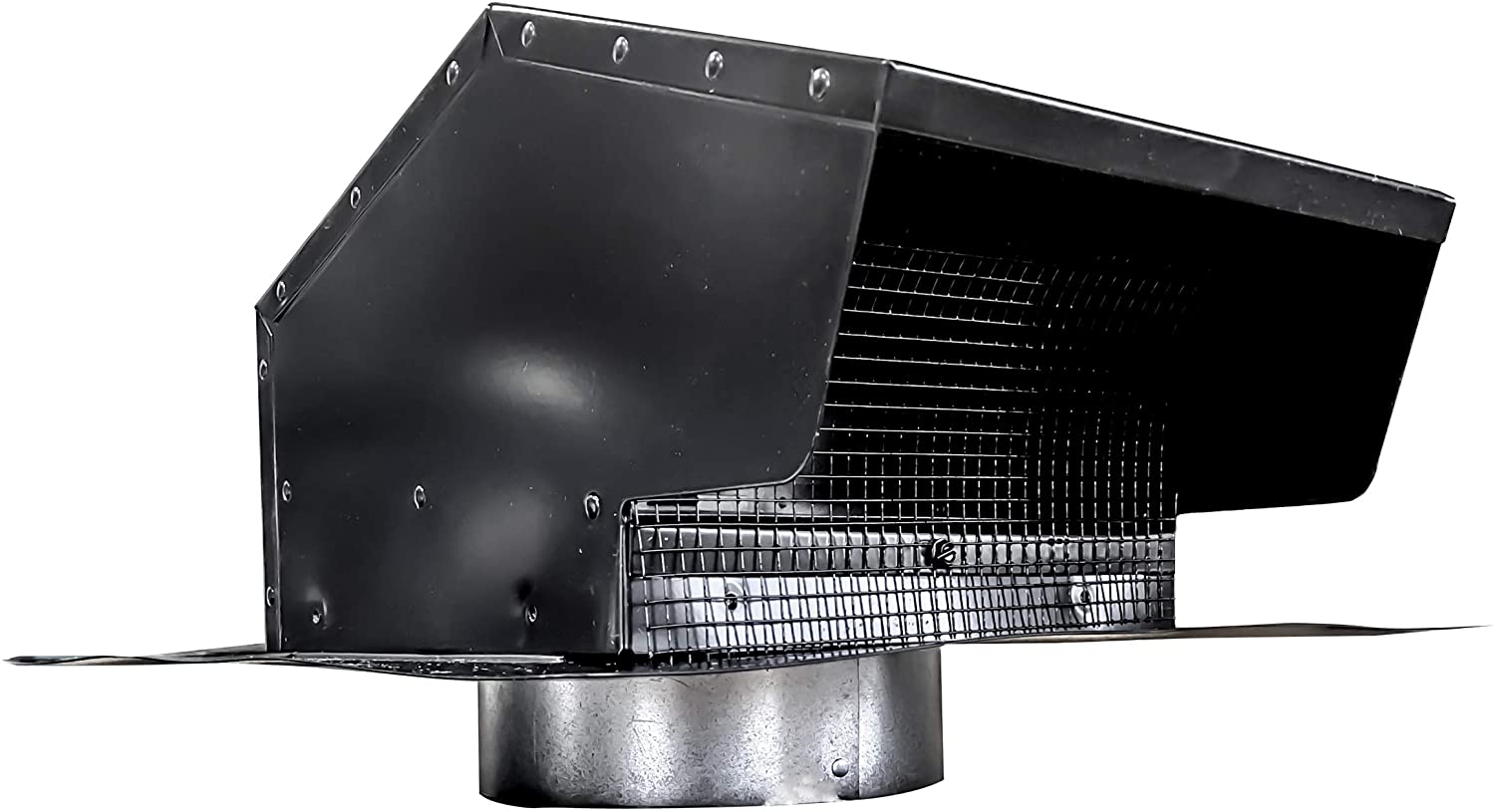
Roof Vent Covers
When it comes to venting hood covers for your roof, they are specialized and different-looking covers. It is not correct to use just any hood cover for installing it onto the roof. Generally, roof covers tend to be made from metal, which makes them a lot more robust and also slightly expensive.
Experts recommend the ‘Builder’s Best Roof Vent Cap’ as a vent hood cover since it’s galvanized and powder-coated, which is an important factor to be considered. Plus, it comes with a flapper and pre-drilled holes that help with easy installation.
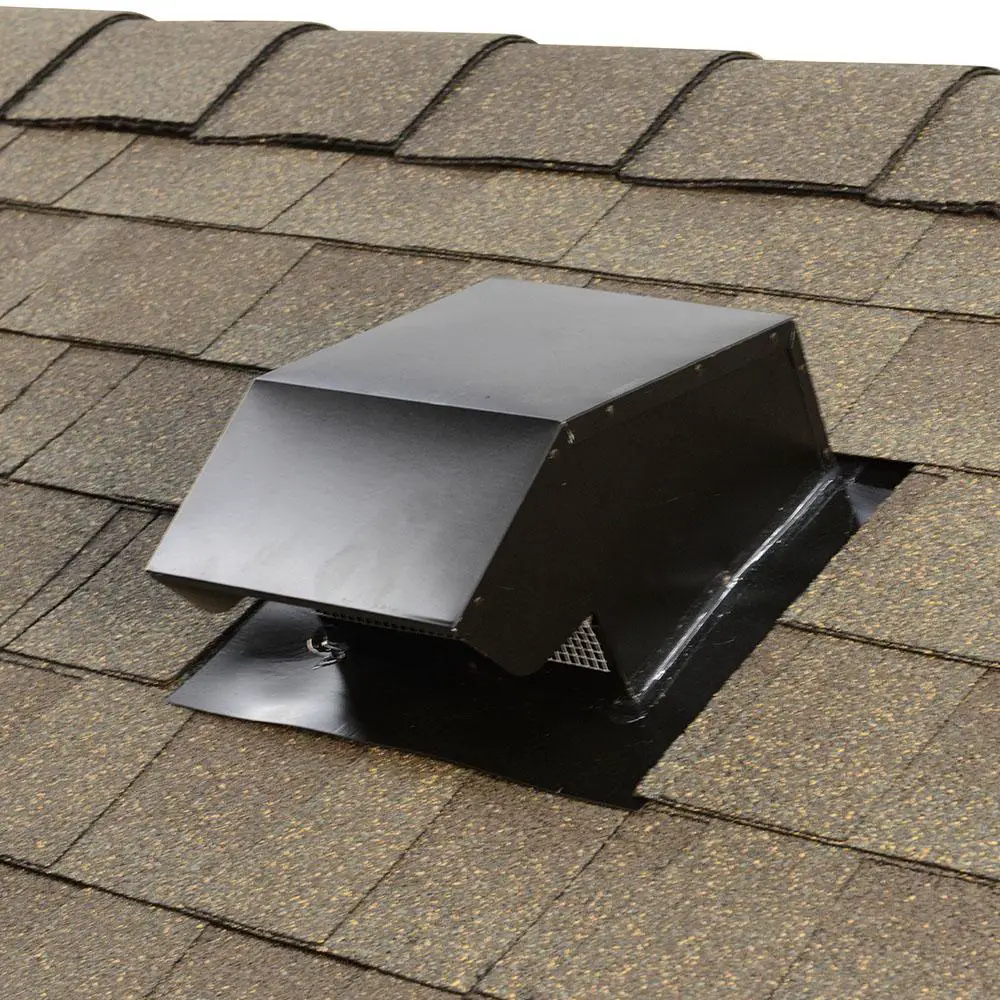
The Required Cost of Venting Through an Attic
The supplies tend to be the cheaper part of installing a new bathroom vent. It is possible to buy a 25-foot insulated bathroom vent plus its cover for about $70. The majority of the cost is for the labor. Plus, if you are looking to vent up to the roof, you will need a roofer that can cost a lot more as compared to venting to a soffit or a gable wall.
When you install a new vent through your attic, this will generally cost you a minimum of about $200 just for the labor. This cost can go up to $500 – $750 if it’s a complicated vent that’s going to the roof.
When it comes to bathroom fan ductwork, that process can be difficult to install and requires a lot of work. It is very hard to do and complicated as a DIY job. Hence, a reliable online contractor search tool can help you in finding the perfect people for this job.
How to Vent To the Soffit Vent in the Attic
This method is not really recommended but it is possible. The bathroom fan can directly be vented to the soffit vent. By doing this, you will avoid messing with your roof and the related leak risks. On the other hand, the disadvantage of soffit vent installation seems to be that it can disrupt quite a bit of the airflow of your soffit venting.
The soffit vents work when the warm attic air, relative to outside, starts rising; hence, it ends up creating a suction effect when it works in tandem with your ridge vent. Plus, all of that extra moisture could result in the growth of mold and cause damage to the wood.
But, if you are really looking to terminate your vent at the soffit, it is recommended to use a soffit vent cover specially made for this purpose. There are bathroom fan vent covers specifically made to be installed on a soffit vent.
Experts recommend the Dundas Jafine Soffit Vent Cover. This cover comes with a spring-loaded damper (flap) and a flush mount style; hence, it can easily blend with the soffit vent.
How to Vent the Bathroom Duct to Your Ridge Vent
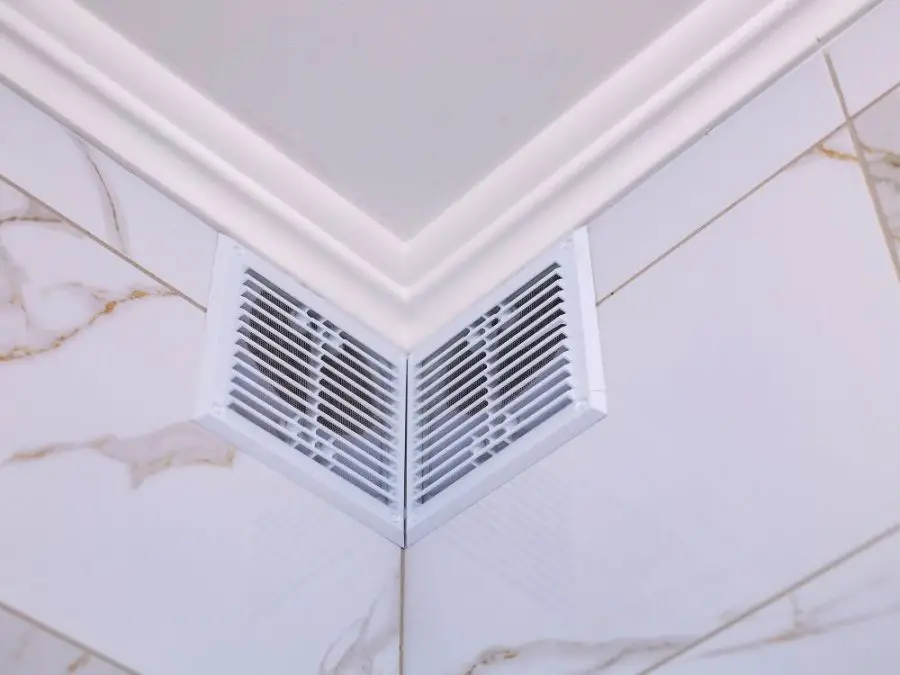
It is not uncommon to see houses that have the bathroom vent vented right below the ridge vent. Even though this is better than venting it to your soffit vent, however, this can still cause issues.
The air inside the attic can be warmer as compared to the outside, this results in a rise in the attic air which gives power to the natural soffit-ridge vent system. This ends up creating a suction effect that pulls in the cooler outside air from your soffits, as it is rising through the ridge vent.
Moreover, the vent will always be terminating a couple of inches below your ridge vent; hence, once it’s venting, all of the air isn’t directly going outside.
A lot of that air will be bouncing around towards the edge of your ridge vent and also the wood sheathing. Hence, venting it to your ridge vent still comes with the risk of mold growth and damage to the wood.
Ways to Prevent Moisture While Venting a Bathroom into Your Attic
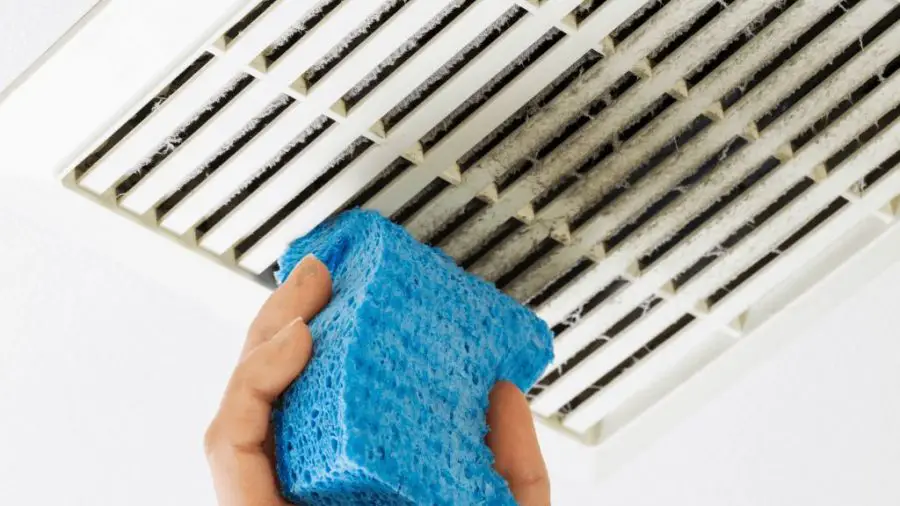
There will always be a risk of water droplets or condensation whenever a bathroom vent makes a long horizontal run within an attic. Experts recommend that you install an insulated bathroom vent; it’s a normal vent that is covered by fiberglass insulation.
Doing this will help in reducing the potential of any formation of condensation that could lead to mold issues or drywall damage. Generally, condensation forms whenever two different temperatures combine, for instance, a chilled drink on a hot day. Water droplets start forming outside the glass.
So, when you send warm interior air through your bathroom vent when the attic is still cold, water might form. Also, besides insulating the bathroom vent, you should avoid U-shaped bends within your vent, since this is going to make the condensation that’s within your vent drip downwards towards the low point of your vent hose.
Dundas Jafine Insulated Flex Duct
Experts recommend the Dundas Jafine Insulated Flex Duct. It is not only surrounded by fiberglass insulation, but it also comes with an outer vapor barrier that helps in preventing condensation issues. This duct is 4 inches in size and 24 feet in length.
Final Thoughts about Attic Bathroom Venting
It is possible to vent a bathroom fan through your attic as long as it terminates on the outside. Also, there are houses that have not yet experienced any signs of mold where the bathroom fan has been vented incorrectly.
On the other hand, there are a couple of potential disadvantages when your bathroom vent is not correctly terminated inside your attic. For instance, the growth of mold, structural deterioration due to wood rot, moist bathroom air being sucked back inside the home, and extra moisture that could attract pests and rodents.
More from Materialsix.com:
- How to Install a Vessel Sink Drain without Overflow
- Ceiling Fan Light Flickers? (9 Possible Causes & Easy Fixes)
- How to Drill Through Joists In A Finished Ceiling
- Can You Use Wood Crown Molding In A Shower? (Explained)
- Does KILZ Kill Mold and Mildew? (Explained)

